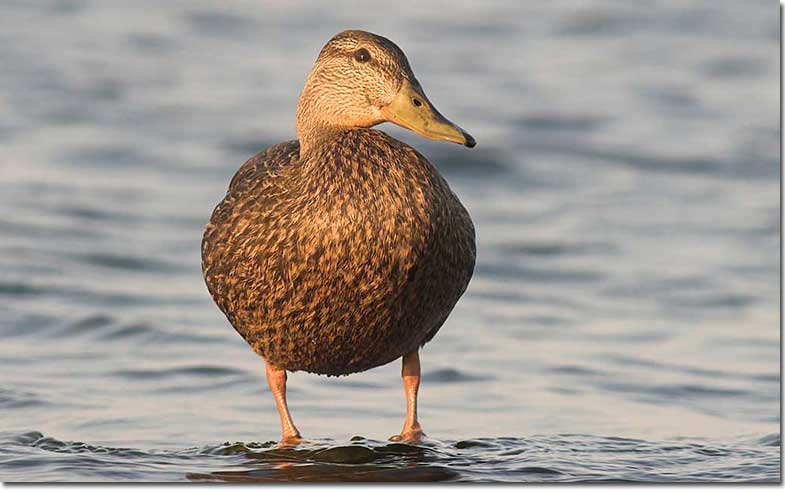The American Black Duck is a big duck. These birds can sometimes be confused for Mallards because they have a profile that is extremely similar. They have bulky bodies, rounded heads, and thick bills. They’re slightly larger than a Gadwall and about the same size as a Mallard. They sit high on the water with their tails tall.
American Black Ducks can be found in saltwater and freshwater in the eastern portions of North America. These birds look very similar to female Mallards, except they have an overall higher contrast, darker plumage, and an olive-yellow bill.
American Black Ducks prefer to inhabit protected bodies of water like ponds and salt marshes. They frequently mix with other duck species, especially Mallards. These two species of ducks often hybridize, so keep in mind that you may see individuals with several characteristics from each species.
For example, you could see a duck with a partially green head and a dark body.
On this page
Identification
Male American Black Ducks have pale gray-brown heads, olive-yellow bills, and dark brown bodies.
When flying, their bright white underwings can be seen. However, the stand-out feature of these birds is their secondaries. They’re iridescent purple and don’t have white borders.
The American Black Duck is 21.3 to 23.2 inches (54 to 59 centimeters) long, weighs 25.4 to 57.9 oz (720 to 1640 grams), and has a wingspan of 34.6 to 37.4 inches (88 to 95 centimeters).
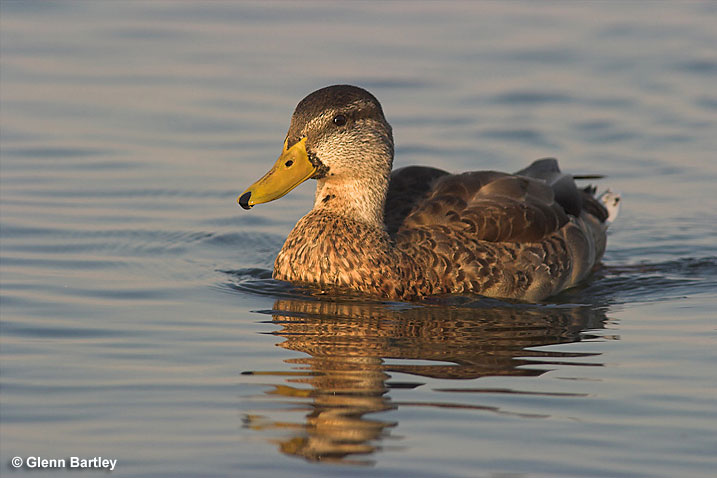
Female American Black Ducks tend to be a little bit paler than males. Their bills are a duller olive color as well.
However, they do have bright white underwings when flying, as well as iridescent purple secondaries. They’re the same size and length and have the same wingspan as breeding males. They also weigh the same amount.
Food
American Black Ducks will eat insects, but their diet mostly consists of plant matter. They’ll eat insects the most during their breeding season. Some of the plant foods they’ll consume are seeds, tubers, roots, leaves of plants that grow underwater or in most soil, and stems.
During the breeding season, both ducklings and adults will have a diet high in animal-based foods. They consume aquatic insects like larvae of mayflies, dragonflies, caddisflies, midges, beetles, and flies. Additionally, they’ll consume mollusks, sometimes fish, and crustaceans.
They forage with their mates or individually in the nesting season, and for the rest of the year, they’ll feed in small groups or alone.
The American Black Duck will forage in shallow water by tipping up to reach underwater food or submerging their heads. Ducks that feed like this are called “dabbling ducks.”
When they forage in deeper water, these birds can dive more than 12 feet deep for food items like plant tubers. During migration, American Black Ducks will eat foliage, seeds, tubers of aquatic plants, fruits of wild terrestrial plants, agricultural grains, invertebrates, and sometimes amphibians and fish.
Wintering American Black Ducks consume mainly plants in freshwater habitats. However, they will add some zooplankton, small fish, and mussels in marine habitats.
Nesting and Eggs
The female American Black Duck will select a nest site that is well-concealed. The site is usually on the ground and on grassy or wooded islands, marshes, uplands, cropland borders, or cultivated croplands.
In addition, the female may choose a brush pile, a shrubby area, a hay bale, a rock crevice, or a patch of grass. Nests can sometimes be in hollows, cavities, or crotches of large trees.
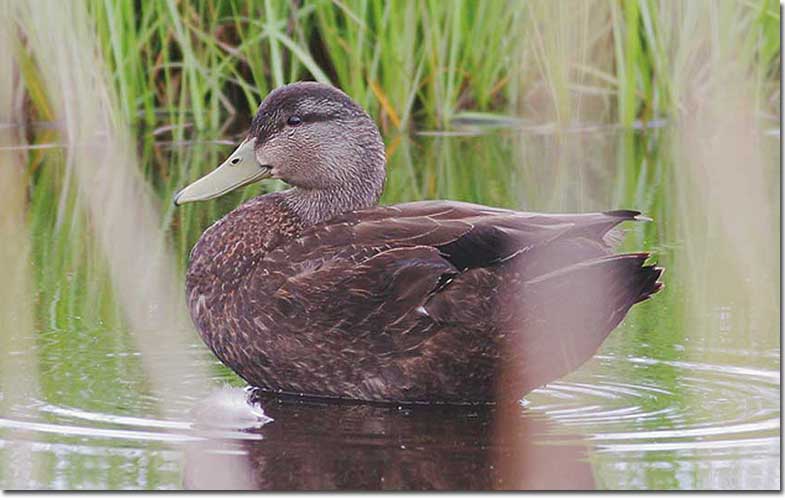
Female American Black Duck from side
The female American Black Duck is the one to build the nest with no help from the male. She’ll dig with her bill and feet in soil or leaf litter to form a basin that’s 1.5 inches deep and 7 to 8 inches across.
When laying her eggs, the female will add plant matter that’s within reach of the nest, like twigs, grass, leaves, conifer needles, and stems. Once she gets to her 4th to 5th egg, she starts adding down feathers from her body.
- Clutch size can range from 6 to 14 eggs.
- American Black Ducks have 1 brood per breeding season.
- Egg length can be anywhere from 2.2 to 2.5 inches (5.5 to 6.4 centimeters).
- Egg width can be anywhere from 1.6 to 1.8 inches (4.1 to 4.5 centimeters).
- The incubation period is 23 to 33 days.
- Eggs are cream-colored, white, or pale greenish buff.
Current Situation
American Black Ducks breed in the northeastern portions of North America in freshwater wetlands. Some habitats they breed in include brooks lined by speckled alder, beaver ponds, shallow lakes with reeds and sedges, wooded swamps, and bogs in boreal forests. It’s also not uncommon to see nests in salt marshes.
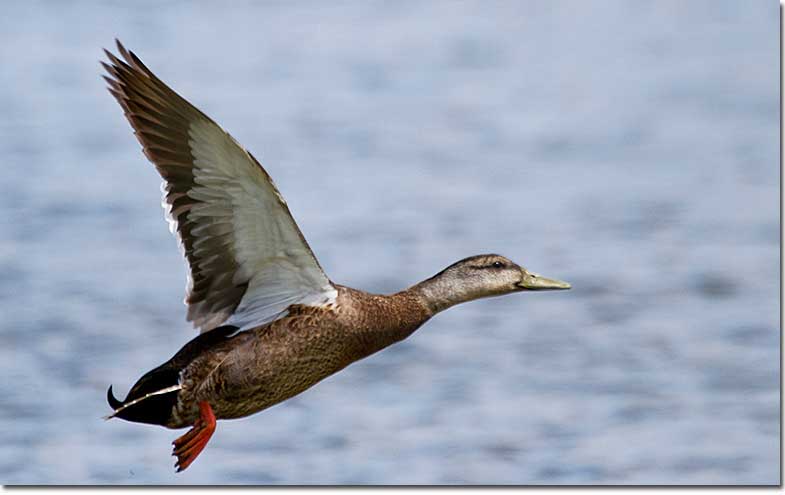
American Black Duck female in flight
American Black Ducks mainly winter in saltwater wetlands, However, they’ve also been seen wintering in beaver ponds, agricultural fields, riverine habitats, and flooded timber. They often take refuge from disturbances like hunting by moving to brackish and freshwater impoundments on conservation land.
American Black Ducks are relatively common. However, there was a recorded decline of about 87% in the U.S., but there has been some stability in Canada between the late 1960s and 2019.
The estimated breeding population is 700,000. According to the IUCN Red List, they are a species of low concern.
Logging, urbanization, and farming in their wintering and breeding habitats may have contributed to the decline in numbers. Additionally, duck hunters exploited this species for decades. It’s estimated that 800,000 were shot per year during the 1960s and the 1970s.
Facts
- The oldest American Black Duck lived to be at least 26 years and 5 months old. It was originally banded in the state of Pennsylvania in 1952, and it was found later in the state of Delaware in 1978.
- Recently hatched ducklings leave the nest as soon as their down feathers dry. They’ll follow their mother to areas that have plenty of vegetation for cover and a lot of invertebrates to eat.
- Pleistocene fossils of American Black Ducks have been found in Georgia and Florida. It’s estimated that the fossils are at least 11,000 years old.
- American Black Ducks are normally found in the eastern portions of North America. However, they have been seen occasionally on the West Coast of North America, Asia, and Europe. Some of the birds seen in these places may have been pets, but others are proven to be wild ducks. For example, one female American Black Duck was banded in Canada. She later turned up later in France.
Similar Species
The American Black Duck has features that are similar to other bird species. Here are some similar species:
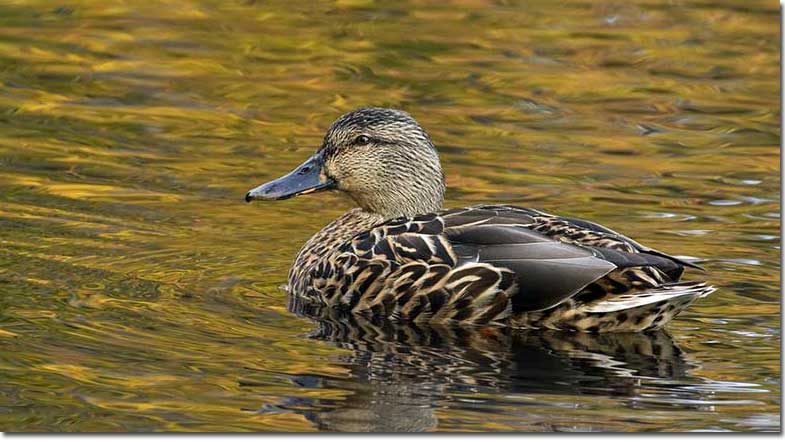
Female Mallard
American Black Ducks have iridescent purple secondaries that aren’t bordered with white. Mallards have blue secondaries that are bordered by white.
Additionally, female American Black Ducks are not as pale as female Mallards, and their bills are olive-yellow instead of orange.
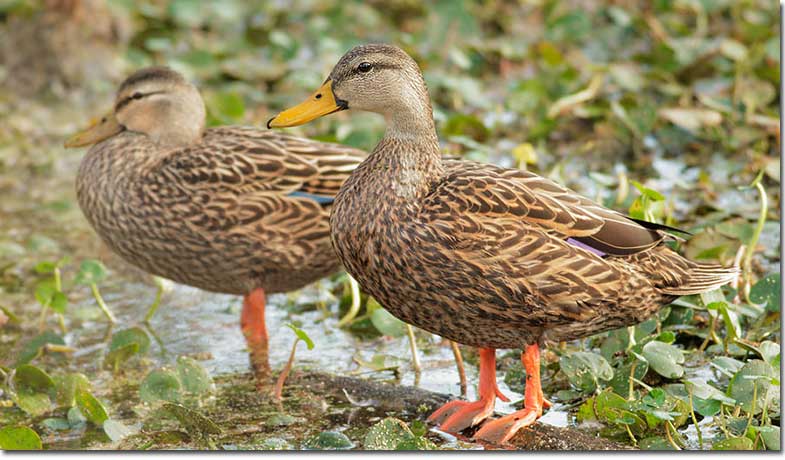
Mottled Duck Pair
American Black Ducks lack the buffy streaks on their face that Mottled Ducks have and are darker in color.
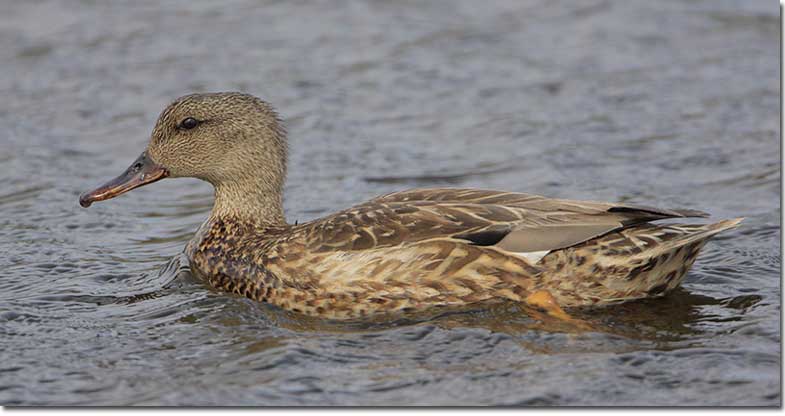
Female Gadwall
American Black Ducks are darker than Gadwalls.
Gadwalls don’t have the iridescent purple secondaries, are more slender, and have orange-black bills.
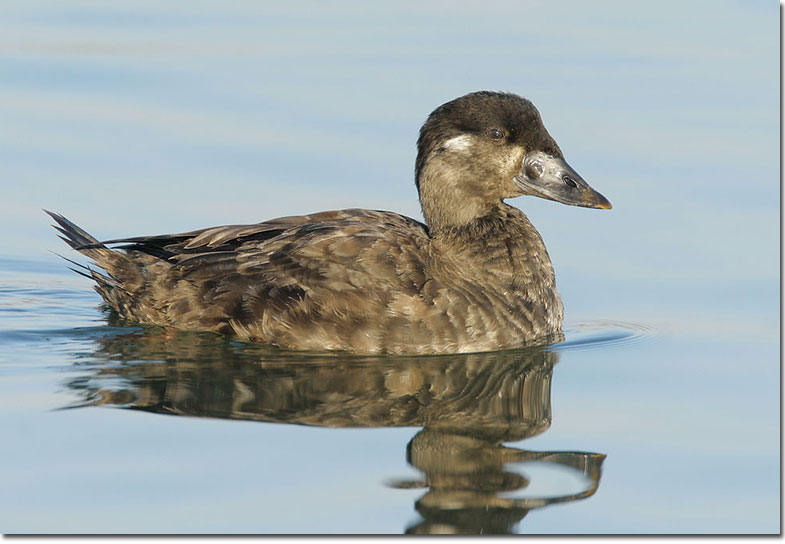
Surf Scoter female
Surk Scoters are diving ducks.
Additionally, Surf Scoters sit lower on the water than American Black Ducks.
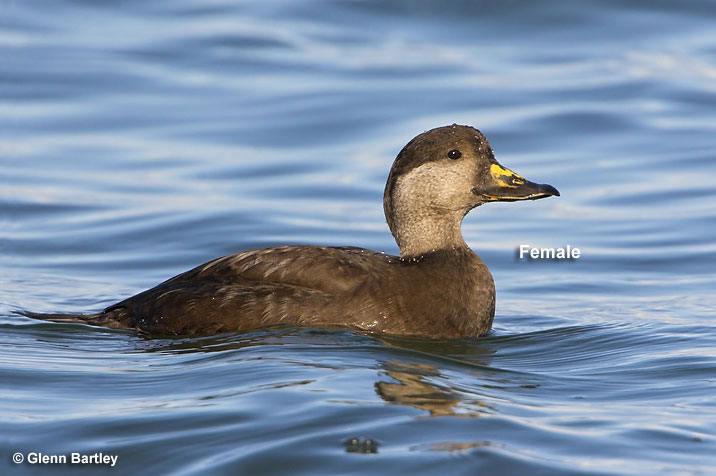
Female Black Scoter
Black Scoters dive instead of dabbling.
Surf Scoters sit lower on the water than American Black Ducks.
Frequently Asked Questions
Is the American Black Duck rare?
No, the American Black Duck is not rare. These birds have a decent range and a stable population.
Where do American Black Ducks live?
American Black Ducks can be found in saltwater and freshwater in the eastern portions of North America. They prefer to inhabit protected bodies of water like ponds and salt marshes.
What is the difference between American Black Ducks and Mallards?
American Black Ducks have iridescent purple secondaries that aren’t bordered with white. Mallards have blue secondaries that are bordered by white. Additionally, female American Black Ducks are not as pale as female Mallards, and their bills are olive-yellow instead of orange.
How can you tell an American Black Duck?
Male American Black Ducks have pale gray-brown heads, olive-yellow bills, and dark brown bodies. When flying, their bright white underwings can be seen. However, the stand-out feature of these birds is their secondaries. They’re iridescent purple and don’t have white borders. Female American Black Ducks look similar, except they’re paler overall.
What is the lifespan of an American Black Duck?
The average duck lives to be 5 to 10 years old. However, there was an American Black Duck that lived to be at least 26 years and 5 months old.

